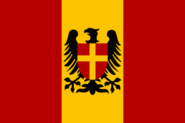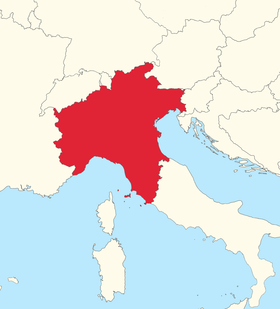User:Waahlis/Façade: Difference between revisions
No edit summary |
No edit summary |
||
| Line 3: | Line 3: | ||
<div class="frontPageLeft"> | <div class="frontPageLeft"> | ||
<!-- left column --> | <!-- left column --> | ||
<div width=420 margin=0 padding=0 style="float:left;"> | <div width=420 margin=0 padding=0 style="float:left;"> | ||
<div class="portal_sliderlink_2">[[File:8-Portal-languages.png|418px|link=Category:Languages]]</div> | <div class="portal_sliderlink_2">[[File:8-Portal-languages.png|418px|link=Category:Languages]]</div> | ||
| Line 23: | Line 24: | ||
<!-- FIRST LEFT SIDE ENDS HERE --> | <!-- FIRST LEFT SIDE ENDS HERE --> | ||
</div> | <!-- </div> --> | ||
<!-- SECOND LEFT SIDE STARTS HERE --> | <!-- SECOND LEFT SIDE STARTS HERE --> | ||
<div class="frontPageLeft"> | <!-- <div class="frontPageLeft"> --> | ||
<!-- FEATURED LANGUAGE --> | <!-- FEATURED LANGUAGE --> | ||
{{Front/break}} | |||
{{Front/featured}} | {{Front/featured}} | ||
<!-- SELECTED LANGUAGE --> | <!-- SELECTED LANGUAGE --> | ||
| Line 36: | Line 38: | ||
<!-- SECOND LEFT SIDE ENDS HERE --> | <!-- SECOND LEFT SIDE ENDS HERE --> | ||
</div> | </div> | ||
<!-- RIGHT SIDE STARTS HERE --> | <!-- RIGHT SIDE STARTS HERE --> | ||
Revision as of 16:51, 26 December 2012
|
| Avendonian | |
|---|---|
| avendoniano | |
 Flag of Avendonia | |
| Pronunciation | [avendoˈni̯ano] |
| Created by | S.C. |
| Date | 2009 |
| Setting | Alt-history Europe, Northern Italian Peninsula |
| Native to | Avendonia |
Indo-European
| |
Early form | Pre-Avendonian
|
Standard form | Central Avendonian dialect
|
Dialects |
|
| Official status | |
Official language in | Avendonia |
| Regulated by | Grunditio Cuningica per la Spraca Avendoniana |
Rough borders of Avendonia | |
Avendonian (autoglossonym: avendoniano; Avendonian: [avendoˈni̯ano]) is a West Germanic language, with strong influence of Vulgar Latin. It is the result of a prolonged contact among members of both regions, after West Germanic merchants began travelling to and from the Western Roman Empire. These connections—and the conquest by the Germanic tribes of the northern skirts of the Roman Empire—slowly formed a creole for mutual communication. Eventually, permanent settlements were established in what would become modern-day Avendonia, where Avendonian is primarily spoken, with official status.
While its vocabulary derives for the most part from Proto-Germanic, Latin influence is most notable in its phonology and its grammar.
Avendonian grammar is relatively straightforward and akin to the grammar of other Romance languages, due to the influence of Latin.
- Two sets of articles, indefinite and definite, preceding the noun.
- Gender and number inflection in nouns, adjectives, and pronouns. Articles and adjectives must agree inflection-wise with the noun or pronoun they modify.
- Twofold gender system, masculine and feminine. Loss of Latin neuter gender.
- Fusional verb inflection for person, number, mood, and tense.
However, noun and adjective declension endings, along with the ablaut in strong verbs are elements derived from Germanic.
There are six major dialects of Avendonian. Central Avendonian (or midio) is considered the standard language, and it is the language most of the author's work is based upon. The main features of the other five dialects will be discussed in the following sections.
| Rangyayo (琅野語) is the native language of the Rangyan people and an official language of the East Asian island nation of Rangya. It is currently classified as a language isolate but could has proposed ties to the hypothetical Altaic language family. Rangyayo is notable for its mixed-logographic and featural orthography, agglutinative grammar and organic mixture of native and Sinitic vocabulary. | |||||||||||||||
| Type[*] | Alignment[*] | Head-direction[*] | Tonal | Declension[*] | Conjugation[*] | ||||||||||
|---|---|---|---|---|---|---|---|---|---|---|---|---|---|---|---|
| Agglutinating | Nominative-accusative | Final | Yes | Case | Number | Voice | Mood | Person | |||||||
| Definiteness | Gender | Number | Tense | Aspect | |||||||||||
- Not sure where to start?
- If you are new to wikis, you may want to read the Help pages.
- For new editors: Please read our style guide, introduction guide and policies, before creating a new page.
- Adding content
- If you want to help but you're not sure where to start, try improving the various stub articles by expanding them.
- Add a new, needed category.
- Another helpful activity would be to check the list of wanted pages for frequently linked-to articles that don't exist yet.
- Providing linguistic and phonetic information.
- You can find a list of needed templates here.
- Wiki maintenance
- Help us by lending a hand with one of our current projects.
- Make your voice heard in our policy discussion.
- Clean up articles in need of attention.
- Fix broken or double redirects.
- Editorial help correcting spelling or grammar is always appreciated.
This wiki is aimed at facilitating the development and creation of constructed languages, conlangs. Constructed languages are made with many different purposes in mind; experimentation, internationalisation, enjoyment and a lot more. They are often linked to constructed cultures and other kinds of inspired settings. Constructed languages have almost endless possibilities, so try making one!
Welcome to Linguifex!
Do you want to create a language? It can take a lot of work to make it presentable but the results are often amazing! To make your own language you need to decide on:
- The phonology - the sounds of the language.
- The grammar - the framework of the language.
- The vocabulary - the words and dictionary of the language.
Enter a title in the box below to start creating your language.
For more information on linguistics see our guide and the linguistics section.
Linguifex houses not just your language, but a dictionary similar to Wiktionary, namely, Contionary. Here you can create and share the vocabulary and details of your constructed language! Write your word (no capitals) and get going!
For more information on the Contionary, see our words and introduction!
The Kihā́mmic translation of the Lord's Prayer!
